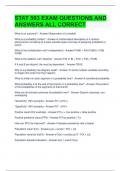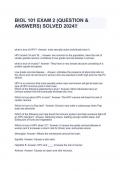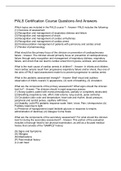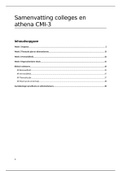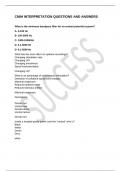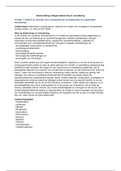Exam (elaborations)
STAT 503 EXAM QUESTIONS AND ANSWERS ALL CORRECT
- Course
- Institution
STAT 503 EXAM QUESTIONS AND ANSWERS ALL CORRECT What is an outcome? - Answer-Observation of a variable What is a probability model? - Answer-A mathematical description of a random phenomenon consisting of 2 parts (sample space and way of assigning probability to event) What is the multip...
[Show more]
